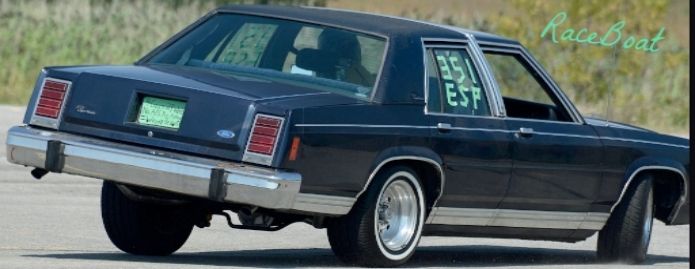AFAIK, one way to kill cats is to leave a car idling for prolonged periods of time. (It should go without saying, but I'm not talking about felines.) I've seen people refer to buying CVPI's from police departments that keep track of idle time (presumably through the computer?). I'm just curious as to whether the cats in our cars have some kind of special properties that allow for extensive idling.
 |
Announcement
Collapse
No announcement yet.
Cat Query
Collapse
X
-
Idling really doesn't hurt them too much. What will kill them is excessively rich fuel mixture, oil burning or coolant burning. Oil or fuel is effectively the same thing to the converter, it just overwhelms them and they get much too hot trying to cook off the hydrocarbons. This can cause the converters to melt down internally. The coolant just contaminates them and destroys them. An engine that runs right should get a LOT of miles out of converters. I pulled the originals off my Mark VII north of 200k, and they were fine other than the crack in the casing. Internally they were clean and un-damaged and as far as the emissions tests could tell, they worked fine.86 Lincoln Town Car (Galactica).
5.0 HO, CompCams XE258,Scorpion 1.72 roller rockers, 3.55 K code rear, tow package, BHPerformance ported E7 heads, Tmoss Explorer intake, 65mm throttle body, Hedman 1 5/8" headers, 2.5" dual exhaust, ASP underdrive pulley
91 Lincoln Mark VII LSC grandpa spec white and cranberry
1984 Lincoln Continental TurboDiesel - rolls coal
Originally posted by phayzer5
I drive a Lincoln. I can't be bothered to shift like the peasants and rabble rousers
-
Yeah, idling killed converters in some carbureted cars because the bandaid fix for many idle issues is to tune it rich. Modern EFI cars are very good at keeping the cats safe. They even have O2 sensors after the cats that monitor their efficiency in real time.
85 4 door 351 Civi Crown Victoria - Summer daily driver, sleeper in the making, and wildly inappropriate autocross machine
160KMs 600cfm holley, shorty headers, 2.5" catted exhaust, 255/295 tires, cop shocks, cop swaybars, underdrive pulley, 2.73L gears.
waiting for install: 3.27's, Poly bushings, boxed rear arms, 2500 stall converter, ported e7's, etc
06 Mazda 3 hatch 2.3L 5AT (winter beater that cost more than my summer car)
Comment
-
That all makes sense. Good to know. Now I can stop panicking when I leave my car idling and take longer than expected.

2000 Grand Marquis LS HPP, a hand-me-down in 2008 with 128,000 km; 175,000 km as of July 2014
mods: air filter box 'tuba', headlight relay harness, J-mod (around 186,350 km), 70mm throttle body, KYB Gas-A-Just shocks, aluminum driveshaft, ARA3 PCM
Comment
-
Factory cats are designed to last the life of the vehicle, as long as it's running properly and something doesn't clog the cats like excess fuel or oil that melts them, or something like a hard hit doesn't break the catalyst inside, they won't go bad. We have trucks at work that we keep maintained, anything that would cause it to run rich or leak coolant or oil is fixed, even if it means a new long block. Some trucks have 450k miles with original cats and they're fine, we don't let them idle but we do drive them average 500 miles a day, 5 days a week.88 Town Car (wrecked, for sale)
Walker OEM duals with muffler deletes
Comment
Comment